If you are like most fiddle leaf fig owners, you are probably anxiously waiting for your plant to produce new leaves. It can be frustrating when your fiddle leaf fig doesn’t seem to be growing new leaves – or if the leaves that your Ficus is growing just don’t seem right.
In this article, we will answer some of the most common questions about new fiddle leaf fig leaves. We will also provide tips on how to get your plant to grow new leaves!
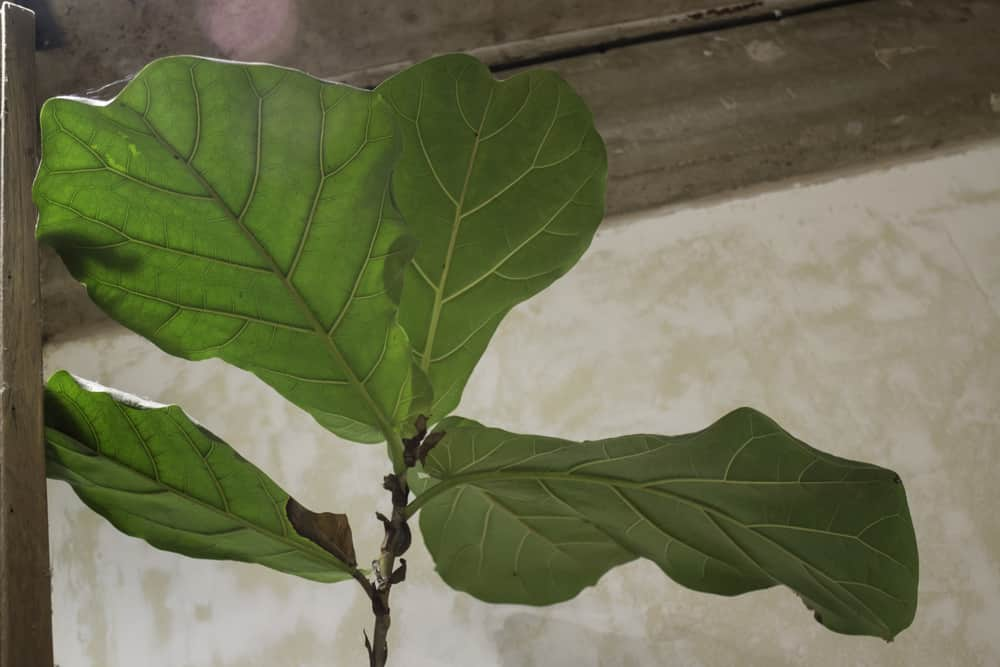
Table of Contents
How do I get my fiddle leaf fig to grow new leaves?
If you’re looking to get your fiddle leaf fig to grow new leaves, there are a few things you can do:
1. Give your fiddle leaf fig more light
This plant hails from the sunny coasts of Africa and produces the most leaves when it gets bright, indirect sunlight. So make sure to place it in the sunniest area of your home or supplement its light with a grow lamp if you live in a low light area.
If this plant doesn’t get enough light, your fiddle leaf fig will stop growing new leaves and instead become leggy. This is when the plant’s stem becomes long and thin because it is reaching out for more light.
Find out more: What Are Your Fiddle Leaf Fig’s Light Needs?
2. Dilute your fertilizer
Fertilizer is an important part of your plant’s diet. However, it can be more effective if you dilute it to half the recommended strength. This is because too much fertilizer can actually burn the roots of your plant and cause new leaves to drop off.
When you do fertilize your fiddle leaf fig, make sure to do so in the spring and summer when the plant is actively growing. This plant won’t absorb fertilizer in the dormant months, which include most months in the fall and winter.
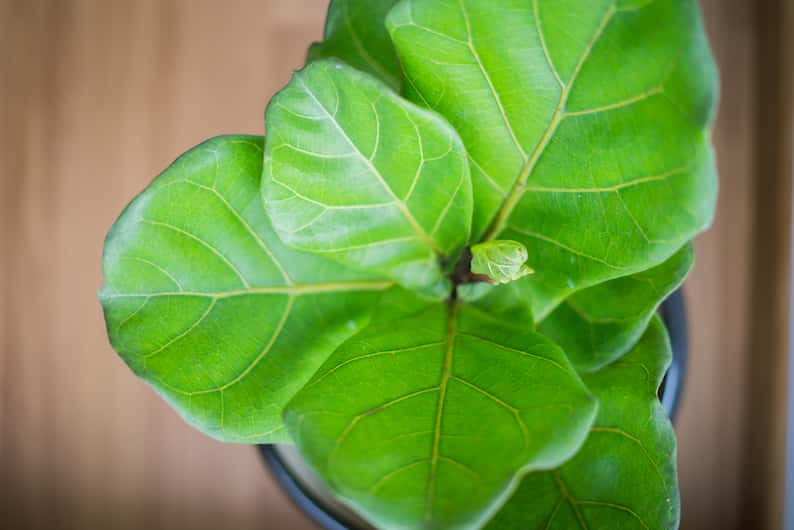
3. Make sure your soil is well-aerated
Fiddle leaf figs need well-aerated soil that drains quickly. This means that the roots of your plant won’t be sitting in water, which can cause them to rot. Root rot is a major reason for thinning or dropping leaves.
To aerate your plant’s soil, mix in some perlite, rocks, or sand. You can also repot your fiddle leaf fig into a pot with drainage holes to make sure the water has somewhere to go.
4. Water your fiddle leaf fig enough
These tropical plants love water, and if you don’t give them enough, they will start to drop leaves. Water your fiddle leaf fig when the top inch of soil is dry to the touch.
It’s also important to use room temperature water instead of cold water, which can shock the roots of your plant. You can also leave the water out overnight to allow the chlorine to evaporate before watering your plant. This will produce lush full leaves over time.
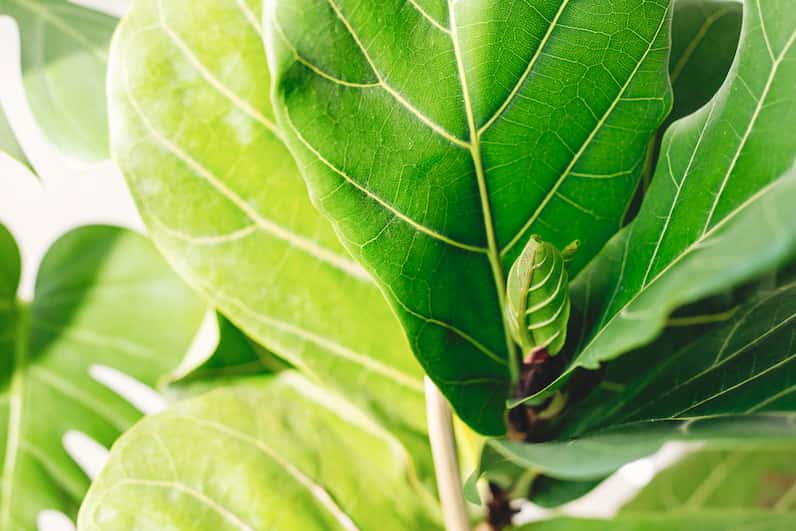
5. Regularly prune your fiddle leaf fig
Pruning your fiddle leaf fig helps to encourage new growth. It also removes any dead or dying leaves, which allows the plant to focus its energy on producing new leaves.
To prune your plant, simply cut off any yellow or brown leaves at the base of the stem. You can also remove any leggy stems that are weak and thinner than other stems of the plant.
6. Use the right pot size
If your fiddle leaf fig is in a pot that is too small, it will become rootbound. This means that the roots of your plant are taking up all the space in the pot and are probably growing out of the drainage holes.
When this happens, the plant doesn’t have enough room to grow new leaves. So make sure to repot your fiddle leaf fig in a new pot approximately every two years. Go up 2 to 3 inches in size at most so that you don’t run into root rot, which happens in oversized planters.
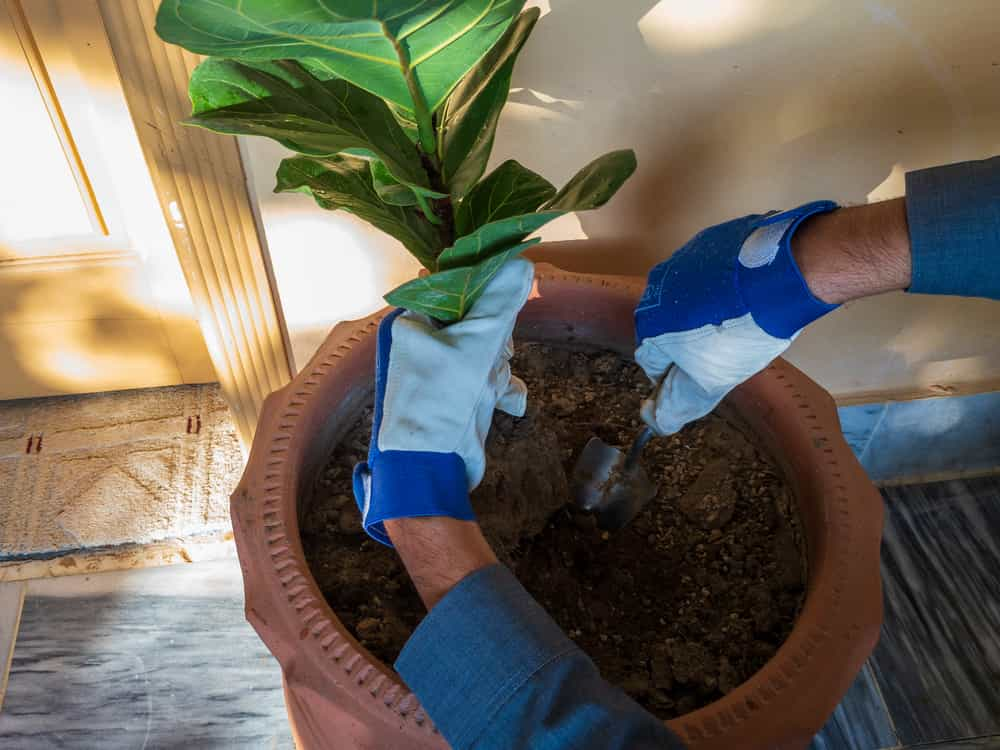
7. Notch the stem
Notching is a technique that helps to encourage new growth on your fiddle leaf fig. It involves making a small cut in the stem of your plant, which signals to the plant that it needs to produce new leaves.
To notch your fiddle leaf fig, simply use a sharp knife or shears to make a 45-degree angle cut about an inch below a leaf node. A leaf node is a point on the stem where a leaf grows. You can do this once every few months to encourage new growth, but make sure not to notch too much off at once or you will damage your plant.
Why are the new leaves on my fiddle leaf fig so small?
If your new fiddle leaves aren’t growing as big as the old ones, it could be due to a lack of nutrients. Fertilize your plant according to the package instructions, and make sure to do so in the spring and summer when the plant is actively growing.
It could also be due to a lack of sunlight or water. Make sure to place your plant in a bright spot, and water it when the top inch of soil is dry to the touch.
Finally, this may be happening because the plant is experiencing root rot. Root rot in fiddle leaf figs is a serious problem that can be caused by overwatering or planting in a pot that is too small. If you think your plant has root rot, repot it in fresh soil and water it less frequently.
Are the new leaves on a fiddle leaf fig soft?
Younger fiddle leaf fig leaves are typically softer than older ones. This is because they’re still growing and filling out, so they haven’t had a chance to harden yet. Once the leaves mature, they will become stiffer and more leathery.
Leaves are made out of a substance called cellulose, and over time, this substance hardens and strengthens the leaves. So if you notice that your plant’s new leaves are soft, don’t worry – they will eventually harden as they mature.
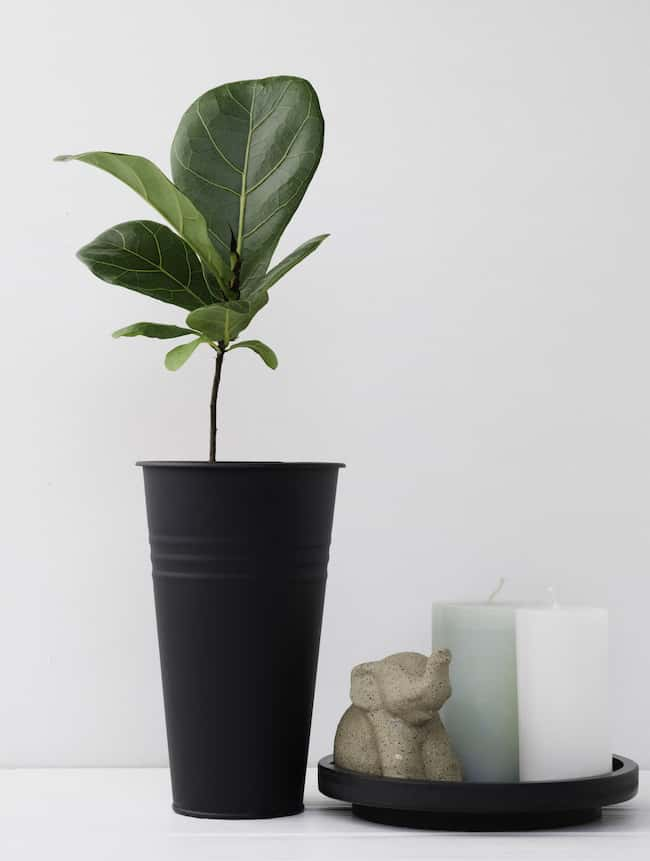
In their early phases, they mostly consist of water and are filled with chloroplasts. Chloroplasts are organelles in the plant cell that are responsible for photosynthesis, which is how the plant produces food.
As the leaves mature, they gradually produce more cellulose and less water. This allows the plant to be able to handle harsh tropical conditions including storms, powerful winds, and direct sunlight.
Why are my new fiddle leaf fig leaves growing close together?
If your new fiddle leaf fig leaves are growing closer together than the older ones, this is a good sign! It means that they are getting enough sunshine and nutrients and that the plant is healthy. The plant won’t produce leaves so close that they suffocate each other, so there’s nothing for you to do.
Fiddle leaf figs are known for their symmetrical leaves, meaning that they typically grow in pairs. So if your plant’s new leaves are growing close together, it’s a sign that they are healthy and doing well.
When your fiddle leaf fig doesn’t have enough sunlight, the opposite will happen and you’ll notice that the leaves start to grow further apart. This is because the plant is trying to stretch and get as much sunlight as possible in order to photosynthesize and produce food.
Why does my fiddle leaf fig have new growth at the base?
When your fiddle leaf fig is producing leaves at the base of its trunk, these are called suckers. They are a sign that the plant is stressed. The stress may come from an injury or from being pot-bound, meaning that the roots have outgrown the pot and need to be transplanted into a larger one.
If your fiddle leaf fig is growing leaves at the bottom, you can leave them on if you want your plant to become bushier and fuller. In fact, many people induce this stress in order to get their fiddle leaf figs to produce more leaves.
If you don’t want your plant to produce suckers, you can remove them by gently twisting and pulling them off at the base. Be careful not to damage the main stem in the process.
Why are my new fiddle leaf fig leaves falling off?
The main reason why new fiddle leaf fig leaves fall off is that they are not getting enough water. When the leaves don’t have enough water, they will start to droop and eventually fall off the plant. Make sure to water your plant when the top inch of soil is dry to the touch.
Another reason why new fiddle leaf fig leaves may fall off is because of temperature fluctuations. When the leaves are new, they are very sensitive to changes in temperature. If the leaves are exposed to too much heat or cold, they will start to turn yellow and fall off.
If you think that temperature changes are the reason why your new leaves are falling off, make sure to keep your plant in a stable environment that is between 65-85 degrees Fahrenheit.
Finally, make sure that your new leaves aren’t being scorched by the sun. They are more sensitive to sunlight when they are young and you can tell if your fiddle leaf fig is sunburnt if the leaves are yellow or brown and have crispy edges. If this is the case, move your plant to a spot with indirect sunlight.
Why are the new leaves on my fiddle leaf fig dying?
There are a few reasons why the new leaves on your fiddle leaf fig may be dying. Your plant is either short on nutrients, isn’t getting enough water, isn’t getting enough sun, or is in too dry and arid of a climate.
Make sure to take care of your plant and give it the proper care it needs in order to thrive.
Find out more: 8 Proven Steps to Save an (Almost!) Dead Fiddle Leaf Fig
It’s worth it to check for pests as well because they can also cause new leaves to die. If you see any insects on your plant, make sure to remove them and treat the plant with an insecticide.
Fungal infections can also be a problem for fiddle leaf figs. If you see any black spots on the leaves, this is a sign of fungus. Remove the affected leaves and treat the plant with a fungicide such as a neem oil and water mixture.
